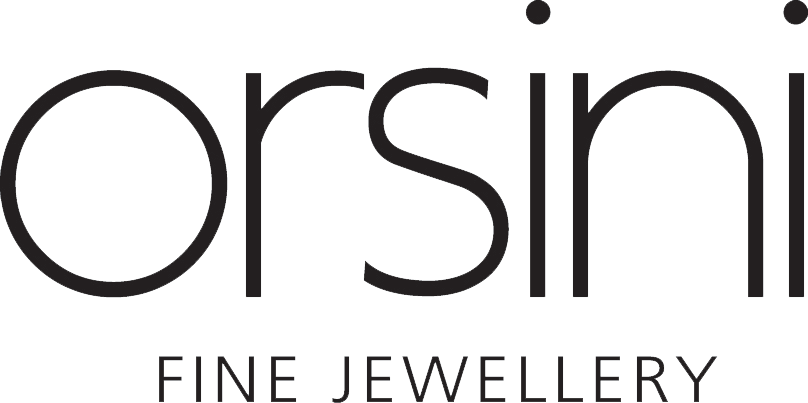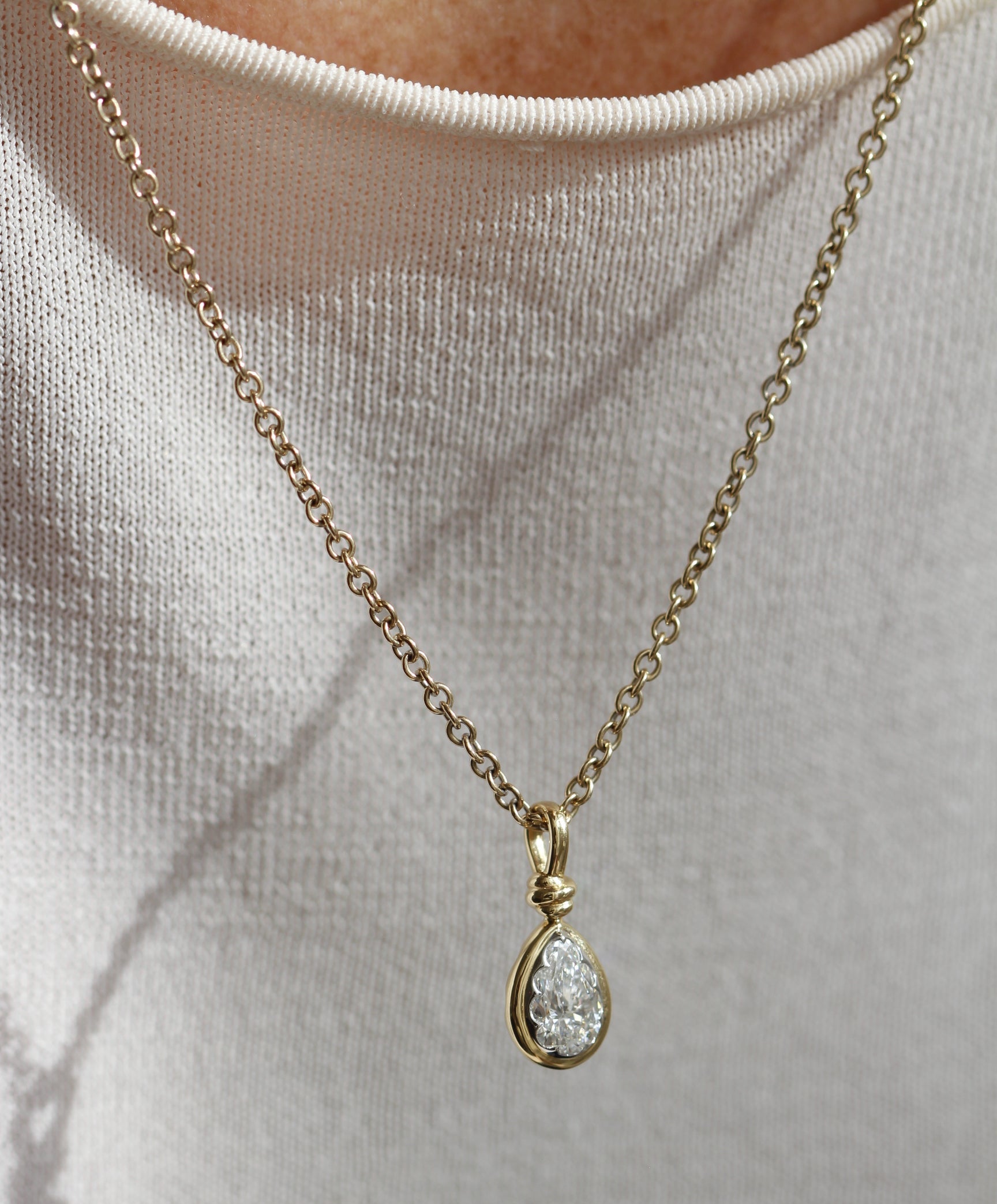
The Ultimate Guide to The Best Diamond Cuts for Engagement Rings
The Ultimate Guide to Diamond Cuts: Which One Is Right for You?
When choosing an engagement ring, it’s essential that you take time to explore the various diamond cuts and shapes and work out which one will work best for you. At Orsini we are often asked for guidance in this area, so we’ve put together the following comprehensive guide to diamond cuts, including popular cuts like round, princess, cushion, emerald, oval, pear, and marquise, as well as the factors to consider when choosing a diamond cut for your engagement ring design.
What Is the Difference Between a Diamond Cut and a Diamond Shape?
This can get a little confusing, but once you know what you’re looking for, differentiating between the two is a breeze.
Diamond shape refers to the geometric appearance of a diamond. Diamond shapes are categorised into two groups: round diamonds and fancy shape diamonds. Round diamonds, also known as round brilliant cuts, are the most traditional diamond shape and incredibly popular. Fancy shape diamonds refer to any diamond that is not a round brilliant, such as princess, cushion, emerald, oval, pear, marquise and heart.
It’s important to note that diamond cut and diamond shape are not the same thing. A diamond’s cut determines how its facets interact with light, while a shape describes the geometric appearance of a diamond. Cut defines what the shape of a rough diamond will be - not the other way around.
This is why diamond shapes are often interchangeably referred to as cuts, just to make things a little more confusing!
What Is the Best Diamond Cut for an Engagement Ring?
Wondering what the best diamond cut is for an engagement ring? It really is subjective, depending on what you want most from your stone and your setting – and usually with budget needing to be considered. With that in mind, let’s learn a little more about how shape affects size, cost and wearability, for selecting the best stone for your style and budget.
Round Diamonds
Perfect for classic looks, the round cut has been carefully engineered to produce the most sparkle and is known for its brilliance and versatility. A well-cut round diamond is a beautiful choice for an engagement ring, but as rounds are the most popular diamond cuts and premium examples in high demand, they're also the most expensive.
Another factor to consider is that while round diamonds might cost more per carat than other shapes, its not the same story when it comes to size. A well-cut round diamond’s majestic sparkle can actually make it look larger than lower cut grade rounds (which is why cut grade is so important when purchasing a round diamond ring), but other shapes can give you much more stone for a lot less money.
Princess Cut Diamonds
The princess cut is one of the most brilliant diamond shapes and, compared to a round, is a little more affordable. How does it compare to other cuts? Princess-cut diamonds are square modified brilliant cuts with pointed corners, and as they boast over 50 chevron-shaped facets, the princess cut is defined by its exceptional fire and scintillation. And although these cuts have a slightly smaller face-up size, their long diagonal measurement makes them seem larger. Easily the most popular of the fancy shapes, princess cuts look great in any setting.
However when it comes to strength, princess cuts lack the durability of other cuts because of their sharp corners. Their four corners are the most vulnerable to chips because it’s a thinner part of the diamond that can easily knock on furniture or other household items, but a quality jeweller can create a design that ensures this is guarded by a strong setting.
Oval Cut Diamonds
Ovals still have most of the brilliance of rounds, but their elongated shape has a super flattering, lengthening effect on the finger which many customers love. The oval shape is an elegant combination of the round brilliant cut and the marquise diamond, and this brilliant cut features shimmering facets that make light truly dance while creating the illusion of longer fingers. Bold and sophisticated, they are also usually significantly cheaper than rounds, so a great choice if budget is an issue.
When it comes to cons, If the symmetry of the oval cut isn’t perfect, the diamond can look slightly off-centre. Look for identical sides, that mirror each other, and only purchase your stone from a certified vendor.
Cushion Cut Diamonds
Cushion-cut diamonds show excellent fire, the angles made for enhancing flashes of coloured light. The cushion cut diamond is also traditionally referred to as the “pillow cut diamond”, and rounded edges soften the corners of this square or rectangular-cut diamond. A unique spin on the classic round brilliant, the cushion-cut diamond is an excellent choice for any engagement ring setting.
A factor that is definitely in their favour, cushion cut diamonds are all unique, so each piece of jewellery made with them will truly be one-of-a-kind. In addition to this, the stone’s rounded edges make it more durable.
The cons of a cushion cut stone include the fact that it is what is known as ‘an open table’, which makes imperfections easier to see. This cut also retains colour better than other shapes, so you need to be very selective about the colour grading you opt for if you want a truly clear diamond.
Emerald Cut Diamonds
Instead of the usual brilliance and fire, emerald cuts are blessed with a very different kind of sparkle. These diamonds reflect light in a beautiful and subtle "hall of mirrors" effect. Emerald-cut diamonds are sought after for their understated glamour and eye-catching depth. This cut features parallel, rectangular facets, and it is the large, open table that highlights the stone’s pure colour and icy clarity.
On the downside, this makes it tricky to hide flaws in the stone. The large, flat surface will show up inclusions a lot easier than other cuts, so you may need to go for a higher clarity than you might with the same size stone, or opt for a coloured diamond.
Pear Cut Diamonds
Not only do pear shaped diamonds have a uniquely beautiful silhouette, their prices are also less expensive than rounds. The pear shape combines round brilliant and marquise-cut styles to form a tapered teardrop with an extraordinary display of light. Like oval and marquise diamonds, the flattering pear shape elongates the finger—especially when worn with the point facing the nail.
In terms of cons, getting the pear cut perfectly symmetrical can be quite challenging, and as
the very end of the teardrop is a vulnerable point, it can crack off or break the diamond quite easily. A quality jeweller should be able to guard this with a strong setting.
Marquise Cut Diamonds
The elongated shape of a marquise cut makes a stone look huge, which always ensures that an engagement ring stands out from the crowd. Marquises have the largest face-up area of all diamond cuts, and look stunning in any setting. Dramatic and a joy to behold, what should you consider when choosing a marquise cut diamond?
First up, a marquise cut accentuates the fingers to make them appear slimmer and longer, with an elongated shape that stretches down the finger in a way many other cuts don’t match. Another pro of marquise cuts is they cost less than round cuts (but more than many other fancy cuts), and the fact that their strong light performance can hide inclusions.
However, something that jewellers refer to as “the bow-tie effect” is present in most marquise cuts. It appears as black lines across the middle of the diamond in the shape of a bow-tie. But while most marquise cuts have the bow-tie, its degree of visibility changes depending on the quality of the diamond.
Last up, the pointed ends on a marquise cut can diminish its durability, but this can be guarded with a strong setting.
How can I find the best diamond cut for me?
At Orsini we love the process of helping our clients to create their dream engagement ring, especially one with a stunning diamond at its heart. The process of building and shaping an idea, then turning that idea into a masterpiece, is one that we relish at every step, and a keen understanding of diamond cuts is fundamental.
If you have an idea in mind for an engagement ring, we’d love to meet with you. The Orsini team consists of talented jewellery designers, premium diamond graders, gemmologists and master goldsmiths, all trained to create unique pieces of jewellery through every stage of the process, with great precision and finish. We are proud of our creations and team work, and we would love to work together with you to make your dreams a reality.
Feel free to contact us at any time, or visit us instore at our elegant Parnell atelier, where we invite you to relax while we discuss the seemingly endless possibilities for your diamond design.











